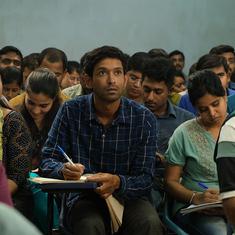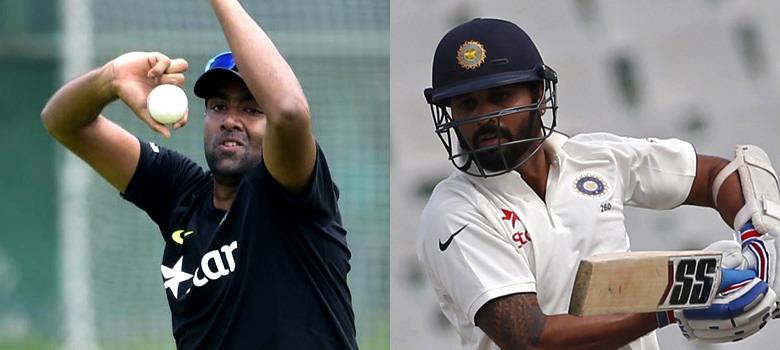After the retirement of Sachin Tendulkar, most Indian cricket fans can only agree on one thing – that he or she would do a better job of choosing the team than the selectors appointed by the Board of Control for Cricket in India. Former cricketer Mohinder Amarnath spoke for a nation when he described the official selectors as a “bunch of jokers”. But later, when offered the post himself, he could not resist the urge.
Fantasy sports first arrived, and thrived, in India in the form of ESPNStar’s Super Selector, a game that promised to identify the most skilled Indian selector of all. Armchair selectors used to subject family or friends or co-workers to their magisterial recommendations.
Now, they flood the comments sections of ESPNCricinfo and other websites with their ideal squads or XIs. They float theories of varying plausibility to explain selections they don’t like, always assuming that a player one doesn’t rate highly must have been chosen for non-cricketing reasons – Stuart Binny is a beneficiary of nepotism, Ravindra Jadeja plays for Chennai Super Kings, MS Dhoni thinks Piyush Chawla is his lucky charm. Unlike the comments sections of articles on politics, these are free of argument, let alone abuse – few armchair selectors are interested in anyone else’s thoughts about team composition.
Selection trumps all
The basic premise underlying armchair selection is merely that the actual selectors have got it wrong but, more fundamentally, that selection is the most important determinant of success. Unlike American “Monday morning quarterbacks”, Indian cricket fans tend to apply less rigorous scrutiny to tactics than to selection. The answer to the team’s problems is always someone else – in an essentially one-sport country of 1.3 billion, there must be a more talented alternative out there.
Some fans long for the return of a discarded former star – Yuvraj Singh, Gautam Gambhir or, especially, Irfan Pathan (who can’t get into the Baroda team at the moment but remains, to his fans, a left-handed Kapil Dev). Most armchair selectors, however, think any underperforming player ought to be replaced by an uncapped youngster.
This is driven in part by the televising of the Under-19 World Cup, and the Indian Premier League’s cap on foreign players, which guarantees employment and game time to young Indian players. National recognition no longer requires playing for India: the likes of Hardik Pandya, Deepak Hooda, Kuldeep Yadav or Sarfaraz Khan, all of them unproven at first-class level, are regularly held up as the answer to India’s need for wicket-takers or power hitters.
In recent years, the armchair selectors’ favourite has been Rishi Dhawan of Himachal Pradesh, who posts impressive statistics against weak opposition in Group C of the Ranji Trophy, but is no Test standard player with either ball or bat.
Tried and tested
India began a four-Test series with South Africa this week after two years of only playing Tests abroad. In that period, a team that had become a laughing stock in away Tests under MS Dhoni has improved gradually but significantly, first under Dhoni himself and now under Virat Kohli. India recently won a Test series in Sri Lanka in 22 years and won at Lord’s, apart with near-misses at Johannesburg, Wellington and Adelaide.
While this has often been described as a period of transition, the team’s improvement is not down to bringing in new players – no member of India’s XI at Mohali this week is playing his first Test at home. A more attacking approach under Kohli, and a rise in fitness and fielding standards following the retirements of all India’s 1970s-born players have certainly helped. But the most important factor might be something that receives much less attention than selection. A number of our players have simply improved.
M Vijay and R Ashwin have much more in common than hailing from Chennai. Few players have received more sustained criticism from armchair selectors. Both have been accused of benefiting from an alleged preference for Tamil Nadu/CSK players in the era of N Srinivasan, the former BCCI president. Both were suspected by many of being home-track bullies, incapable of success outside India.
Today, Vijay is the Test team’s most consistent batsman and Ashwin the most consistent bowler. Along with the captain and perhaps Ajinkya Rahane, the Chennai duo are the only players guaranteed a place in the side. Vijay and Ashwin illustrate both the possibility of improvement as well as its value.
Seeking redemption
Other than the pressure that comes with playing for India, the primary difference between Test and domestic cricket is the unforgiving nature of the longest form of the game. You may start your career well, but within months your strengths are likely to be nullified and your weaknesses ruthlessly exploited. In the lexicon of contemporary cricket, you will be “worked out”. This was always the case, but the adoption by all teams of detailed video analysis has accelerated the process.
No one knows this better than Vijay and Ashwin. Both achieved early success at home. But as the Test world grew familiar with them, and as they played abroad for the first time, the methods that had taken them to the Indian team brought alarmingly diminished returns. Vijay was exposed as unsure and leaden-footed outside his off-stump. Ashwin’s main strength was his variations, but these soon lost their mystery, and he responded in a familiar way – by trying too hard.
By the end of India’s tour to New Zealand in early 2014, Ashwin was out of the Test team and Vijay was down to his last chance. A few months later, in England, Vijay was the team’s highest run-scorer. Subsequent performances have proved that this is no anomaly. It took Ashwin a little longer – but, having been written off in Australian conditions, he was India’s most impressive bowler at the World Cup, and the driving force behind the series win in Sri Lanka.
The right approach
When a Test cricketer encounters his first prolonged slump in form, it is often thought that his game has changed and that he needs to return to the original methods that brought success. This was not the case with Vijay and Ashwin, whose success is driven by technical improvements and changes in approach. Vijay is now decisive in his footwork and secure outside the off-stump – no Indian batsman is more willing to leave the ball.
Ashwin is now a more classical bowler – bowling more off-breaks and spinning them harder, flighting the ball outside off rather than bowling darts at the stumps, apart from using more overspin. A key difference between his performance in the Tests in Australia and at the World Cup was his getting the seam to point towards leg-slip, rather than mid-wicket, while bowling his off-break. The Ashwin who ruined Kumar Sangakkara’s farewell series in Sri Lanka was a bowler almost unrecognisable from 12 months earlier.
But the nonstop nature of international cricket makes improvement of this kind especially difficult. There is no longer an “offseason” in which players can do focused technical work in the nets. Vijay and Ashwin’s improvement is testament to their work ethic and capacity for introspection, but was dependent upon time away from the game. Vijay is not part of India’s ODI or T20 squads while Ashwin was dropped for large parts of 2014.
Selection and player improvement are thus related: players whose abilities the selectors believe in do need to be rested or dropped from time to time to give them a chance to work on their skills. Sometimes being dropped results in few technical changes, but leads to improvement through renewed motivation, as was the case with Virender Sehwag in 2007.
Club football, particularly in Europe, has an equivalent to Indian cricket’s selection mania: the transfer market. The answer to a team’s problems is always a new signing, the more expensive the better. Arsene Wenger, manager of Arsenal for two decades, is notorious for his disdain for this approach. A team improves less through new signings, he says, than through greater cohesion and individual improvement. These “internal solutions”, as he calls them, require patience and sustained effort. But if India are to beat South Africa, the world’s No 1-ranked team, for only the third time in 12 series, internal solutions are our best, perhaps only, hope.










